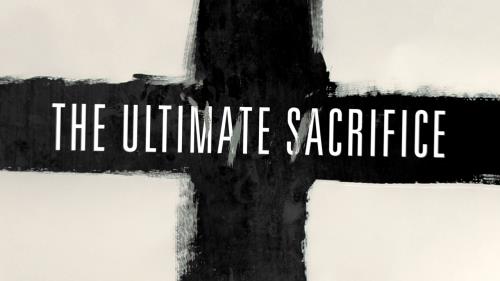-
The One Who Understands Series
Contributed by Jonathan Mcleod on Nov 28, 2017 (message contributor)
Summary: Jesus understands the difficulties that we face.
[To receive free weekly sermons by email, please contact jonrmcleod@yahoo.com]
Why is the question “Who is Jesus?” the ultimate question?
• Because Jesus is the ultimate person.
Origen, in the third century, told of a village with a huge statue—so immense that no one could see exactly who it was supposed to represent. Finally, someone miniaturized the statue so the people of the village could see the person it honored. Origen said, “That is what God did in His Son.” God is too big for us to comprehend. But when Jesus came to earth, God was, in a sense, miniaturized. John 1:18 says that Jesus “has made [God] known” (revealed him, explained him).
Jesus has made God known because He is God. “In the beginning was the Word [Jesus], and the Word was with God, and the Word was God” (John 1:1). “The Word became flesh and made his dwelling among us” (John 1:14). God became a man, and His name was Jesus.
• Because the answer determines a person’s eternal destiny.
John 7:1-13
THE FEAST OF TABERNACLES
John 7 and 8 take place during the Feast of Tabernacles.
“But when the Jewish Feast of Tabernacles was near…” (v. 2).
Six months have passed between chapters 7 and 8. We know this because 6:4 says that “the Jewish Passover was near.” (The Feast of Tabernacles occured six months after Passover.) It will be another six months until Jesus is crucified. (The crucifixion took place during the next Passover.)
The Feast of Tabernacles was celebrated from the 15th to the 21st of Tishri. Since Jewish months were lunar (the first day of each coinciding with the new moon), they cannot be exactly correlated with our months. Tishri generally covers part of September and part of October.
It was also called the Feast of Booths, because the people lived in booths during the festival. It was a time to recall God’s provision for His people during the wilderness wanderings.
“Celebrate this as a festival to the LORD for seven days each year. This is to be a lasting ordinance for the generations to come; celebrate it in the seventh month. Live in boths for seven days: All native-born Israelites are to live in booths so your descendents will know that I had the Israelites live in booths when I brought them out of Egypt. I am the LORD your God” (Leviticus 23:41-43).
The Feast of Tabernacles was one of three pilgrimmage feasts. (The other two were Passover and Pentecost.) The historian Josephus reports that entire Jewish towns went up to Jerusalem for this festival.
In John 7 and 8, Jesus used two traditional symbols from the Feast of Tabernacles, water and light, to help the people understand who He is and what He offers.
LIVING WATER
The seventh day of the festival became knows as “the Great Day.” The Jews developed special observances and traditions to mark this special day in Israel. The most spectacular of these was the water drawing ceremony.
Imagine a whole parade of worshipers and flutists led by the priest to the Pool of Siloam. The priest has two golden pitchers. One is for wine. He fills the other with water from the pool. As the flutes continue to play, a choir chants Psalm 118. The whole procession heads back to the temple through the Water Gate. A trumpet sounds as the priest enters the temple area. He approaches the altar where two silver basins are waiting. He pours wine into one of the basins as a drink offering to the Lord and water from the Pool of Siloam into the other. The whole ceremony was such a joyful occasion that one of the ancient rabbis wrote: “Anyone who has not seen this water ceremony has never seen rejoicing in his life.” The purpose of the ceremony was to thank God for His blessings and to ask Him to provide rain for the crops in the coming year.
The people would have been very aware of their need for water during the Feast of Tabernacles because late autumn was a period of drought in Israel. Cisterns were low. Springs were becoming weak. The hills were barren and parched.
“On the last and greatest day of the Feast, Jesus stood and said in a loud voice, ‘If anyone is thirsty, let him come to me and drink. Whoever believes in me, as the Scripture has said, streams of living water will flow from within him’” (7:37-38).
THE LIGHT OF THE WORLD
At the end of the first day of the Feast, the temple was gloriously illuminated. Four enormous golden candelabras stood within the temple court. Each of the candelabras is said to have been 50 cubits high. A cubit is somewhere between 18 and 22 inches, so the candelabras would have been about 75 feet tall! Each candelabra had four branches, and at the top of each branch there was a large bowl. Four young men bearing 10 gallon pitchers of oil would climb ladders to fill the four golden bowls on each candelabra. And then the oil in those bowls was ignited.

 Sermon Central
Sermon Central



